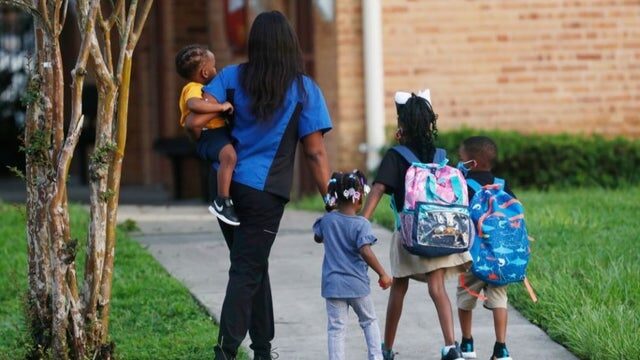
© Getty Images
A new study published by the Centers for Disease Control and Prevention (CDC) found that
in-person classes at K-12 schools do not appear to lead to increases in COVID-19 when compared with areas that have online-only learning.The CDC study noted that in the week beginning Dec. 6, coronavirus cases among the general population in counties where K-12 schools opened for in-person learning were similar to rates in counties that were online only.
"CDC recommends that K-12 schools be the last settings to close after all other mitigation measures have been employed and the first to reopen when they can do so safely," the authors of the report wrote.
As of Dec. 7, about 62 percent of K-12 school districts were offering either full or partial in person-learning, but reports of outbreaks at schools have been limited, according to the CDC.
Between March 1 and Dec. 12, nearly 3 million cases of COVID-19 among children, adolescents and young adults were reported in the U.S., the report said.
The analysis found that the number of positive COVID-19 cases was lower among children aged 10 and younger compared to older children and young adults.Nearly 60 percent of cases were in young adults between the ages of 18 and 24, according to the CDC, while children between the ages of 14 and 17 accounted for 16 percent of cases.
Children between the ages of 11 and 13 accounted for 8 percent of cases, and children ages 5 to 10 made up 11 percent of cases. Children 4 and under accounted for 7.4 percent of cases.
The smaller number of cases among younger children suggest the risk for COVID-19 introduction and transmission in child care centers and elementary schools "might be lower" than reopening high schools and institutions of higher education, the authors wrote.
The data does not indicate that the higher number of cases among adults were preceded by increases among children or adolescents, the report found.
"Schools provide a structured environment that can support adherence to critical mitigation measures to help prevent and slow the spread of COVID-19," the authors wrote.
"When community transmission is higher, cases in schools should be expected, and as with any group setting, schools can contribute to COVID-19 transmission, especially when mitigation measures such as universal and proper masking are not implemented or followed," they added.
The report found the number of cases among young adults, however, was higher than that in other age groups through the fall and summer, preceding increases among other age groups, "suggesting that young adults might contribute more to community transmission than do younger children."
Comment: See also: